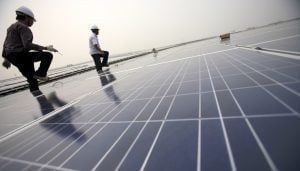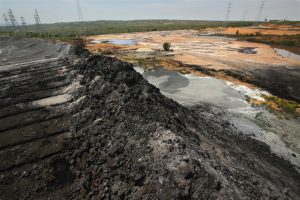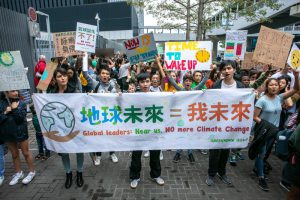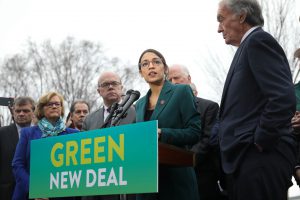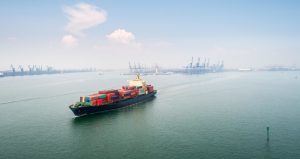“The age of climate panic is here. It is O.K., finally, to freak out,” wrote David Wallace-Wells, author of The Uninhabitable Earth, in a recent New York Times op-ed, echoing the Swedish teen and climate activist Greta Thunberg. “I don’t want you to be hopeful,” she told suited delegates at Davos. “I want you to panic.”
Derided by some as alarmist “climate porn”, Wallace-Wells’ new book of scary statistics sets out how rising temperatures will touch every aspect of all our lives. The aim is to strike fear deep into readers’ hearts and shake us out of our collective apathy.
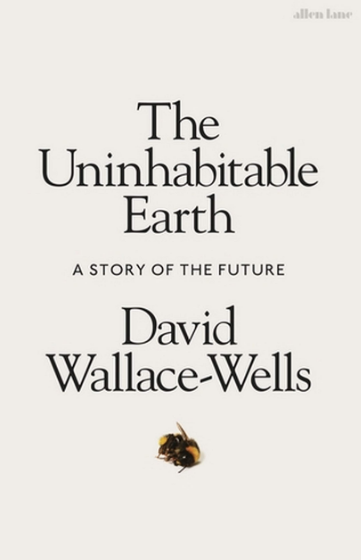 “We have burned more fossil fuels since the UN established the Intergovernmental Panel on Climate Change than in all of the centuries before. So we have done more damage knowingly than we ever managed in ignorance. That is a horrifying fact. It also means we are engineering our own devastation practically in real time,” writes Wallace-Wells, who is deputy editor of New York magazine.
“We have burned more fossil fuels since the UN established the Intergovernmental Panel on Climate Change than in all of the centuries before. So we have done more damage knowingly than we ever managed in ignorance. That is a horrifying fact. It also means we are engineering our own devastation practically in real time,” writes Wallace-Wells, who is deputy editor of New York magazine.
He admits he is no environmentalist, he does not like camping and spent his life up till now “fatally complacent” or “wilfully ignorant” about climate change. But he started collecting climate change stories and reading a lot of alarming scientific papers and was shocked by how the media coverage was so divergent from reality.
In 2017 he wrote a landmark article on climate change looking at worse case scenarios for global warming. He has now elaborated on this in a lengthy book expounding the living nightmare that lies ahead of us if we do not dramatically change our course.
While his conclusions reflect IPCC warnings – that we have 12 years left to cut emissions by half if we are to have any hope of avoiding catastrophic climate change – his style is, thankfully, far more inviting.
In the opening of the book, he sets out to dispel popular myths about climate change. The first is that it is slow, unfolding over centuries and we have time to find solutions. We do not. “We’re now speeding blindly on a course to more than 4 degrees of warming by the year 2100, having brought the planet to the brink of catastrophe within the lifetime of a single generation,” he writes.
The second is the scope of the problem. Climate change isn’t an issue of Arctic ice and sea level rise, of imperilled polar bears and floods displacing people in places far away (at least from the developed country audience he is writing for). It means starvation, displacement, war, cities under water and major droughts and disease in our lifetime. We are just beginning to learn how much bigger the problem is.
Already at 1.1 degrees of warming from pre-industrial temperatures, we are seeing a rash of extreme weather and natural disasters and losing wildlife at such a rate we are experiencing the “sixth mass extinction”.
But there’s much further to go. Such calamities mark the end of normal, as climate change tips Earth beyond the conditions that allowed us to evolve in the first place.
At 2 degrees the ice sheets will collapse, major cities in the equatorial band will become uninhabitable and heat waves will kill thousands every summer even in the northern latitudes. At 3 degrees, southern Europe would be in permanent drought while hundreds of coastal cities including Miami, Dhaka, Shanghai and Hong Kong would be under water. At 4 degrees the planet’s tropical forests would transform into fire-dominated savannahs, global damages reach over US$600 trillion, conflict and warfare double.
As the author emphasizes, this is not a story of the future (although, strangely enough, that is the subtitle of the British edition of the book). Much of the horror is already with us: drought and water scarcity in South Asia, Day Zero in Cape Town, increasingly violent storms and hurricanes, deadly toxic air across much of Asia, micro plastics in the ocean and our own bodies. If we do nothing about carbon emissions, by the end of the century whole regions will have become unliveable by any of today’s standards.
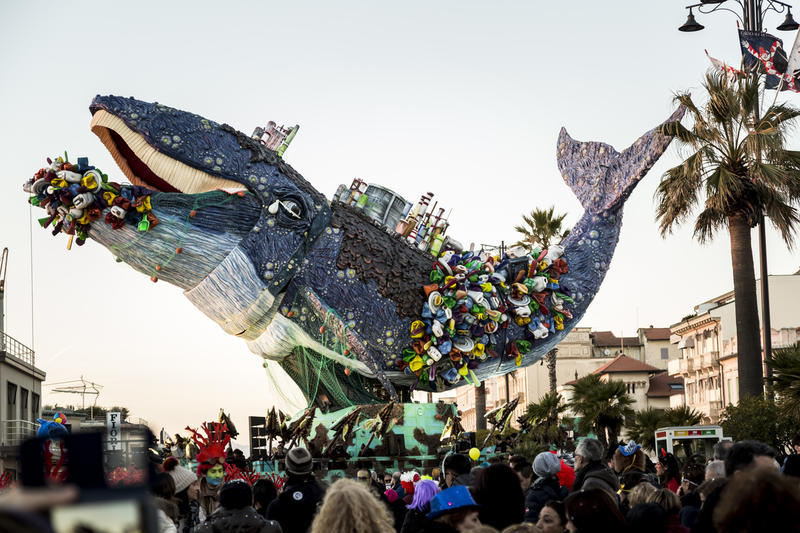 A giant whale chokes on single-use plastic at Viareggio Carnival in Italy.
A giant whale chokes on single-use plastic at Viareggio Carnival in Italy.
(Image: Francesco Alesi / Greenpeace)
Numbers numb
While the prose is elegant, the dizzying barrage of statistics and probabilities threatens to numb even the most engaged reader.
“If you have made it this far, you are a brave reader. Any of these twelve chapters contains, by rights, enough horror to induce a panic attack in even the most optimistic of those considering it,” admits Wallace-Wells.
The author, however, remains surprisingly upbeat. If humans are responsible for the problem they must be capable of undoing it, he surmises.
The second part of the book is more whimsical, exploring how climate change will transform every aspect of our lives, society, pop culture, technology, mental health, our political systems, the way we imagine our future and make sense of the world.
Wells calls himself “an end of history kid”: an American who grew up with the firm belief that history marks progress and was marching towards a liberal democracy with every generation deserving a better quality of life than the last. But now with climate change, he sees in the 21st century a likely major step backward for the wellbeing of humanity.
What emerges from the ashes?
Is it moral to have children in these conditions, asks Wallace-Wells, who had a daughter during the period he wrote the book. How will “widespread alarm shape our ethnical impulses towards each other” and what “new politics will emerge from those impulses” are among the more profound questions being posed by climate change, he muses.
But this is not a book of solutions. Wallace-Wells dismisses the power of individual choices. Choosing to eat vegan burgers or sip out of reusable straws will not make much difference. Vote for leaders who understand the scale of the crisis and make climate change their main priority, he urges. If you are worried about the myriad effects of climate change – inequality, war, joblessness – mobilise to put pressure on leaders to make changes of the scale we need.
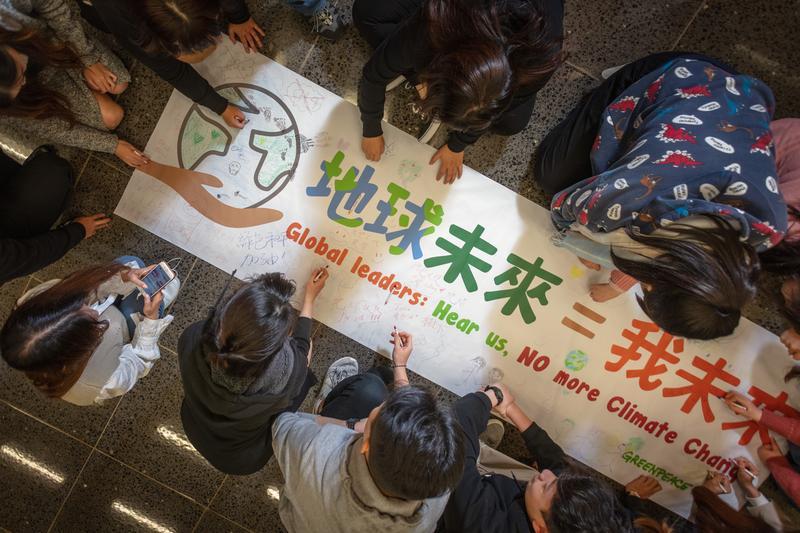 Hong Kong students prepare to take part in the school climate strikes
Hong Kong students prepare to take part in the school climate strikes
(Image: Pak Chai Tse / Greenpeace)
How will politics evolve as the promise of growth recedes? Again, Wallace-Wells is evasive. As the need for cooperation becomes more urgent, we are unbuilding alliances, retreating into tribalism and nationalism and away from collective responsibility.
For Wallace-Wells, China holds all the cards on climate change. How fast the country transforms its industry, agriculture and consumption patterns – as well as the shape of its Belt and Road Initiative through which it has positioned itself as a major provider of infrastructure for industry and energy in the developing world – will determine the climate shape of this century. As will the course taken by other major economies such as India, Nigeria and South Africa.
He hopes China’s “quasi authoritarian” model will be more effective than liberal democracies. He finds solace in the green rhetoric of Xi Jinping and the positive progress China is making on renewables and imagines that the country will take on something more than narrowly national powers over climate policy, which other countries can fall into line behind.
This may seem naïve, given the painful stuttering of China’s transition away from fossil fuels, and the rise of regressive climate policies among the “strongmen” leaders of today – from Bolsonaro in Brazil to Trump in the United States.
Other sources of hope are emerging though, as young activists show no reticence in calling out potential doom. We have seen growing momentum behind the school climate strikes worldwide and the rise of the Extinction Rebellion movement which has moved the UK parliament to declare a climate change emergency. The rhetoric around the young US Representative Alexandria Ocasio-Cortez’s Green New Deal is also catching on. These movements bring home the intergenerational injustice of our crisis, with young people left to pick up the pieces after decades of stalled action.
By the end of the book, I found myself ready to welcome the possibility of complete environmental and social collapse in a strange way. You can start to think about what you need to keep and what you have to throw away as a society, which is quite exciting. I hope there is a sea change taking place, and that we can make it if we move fast enough.

